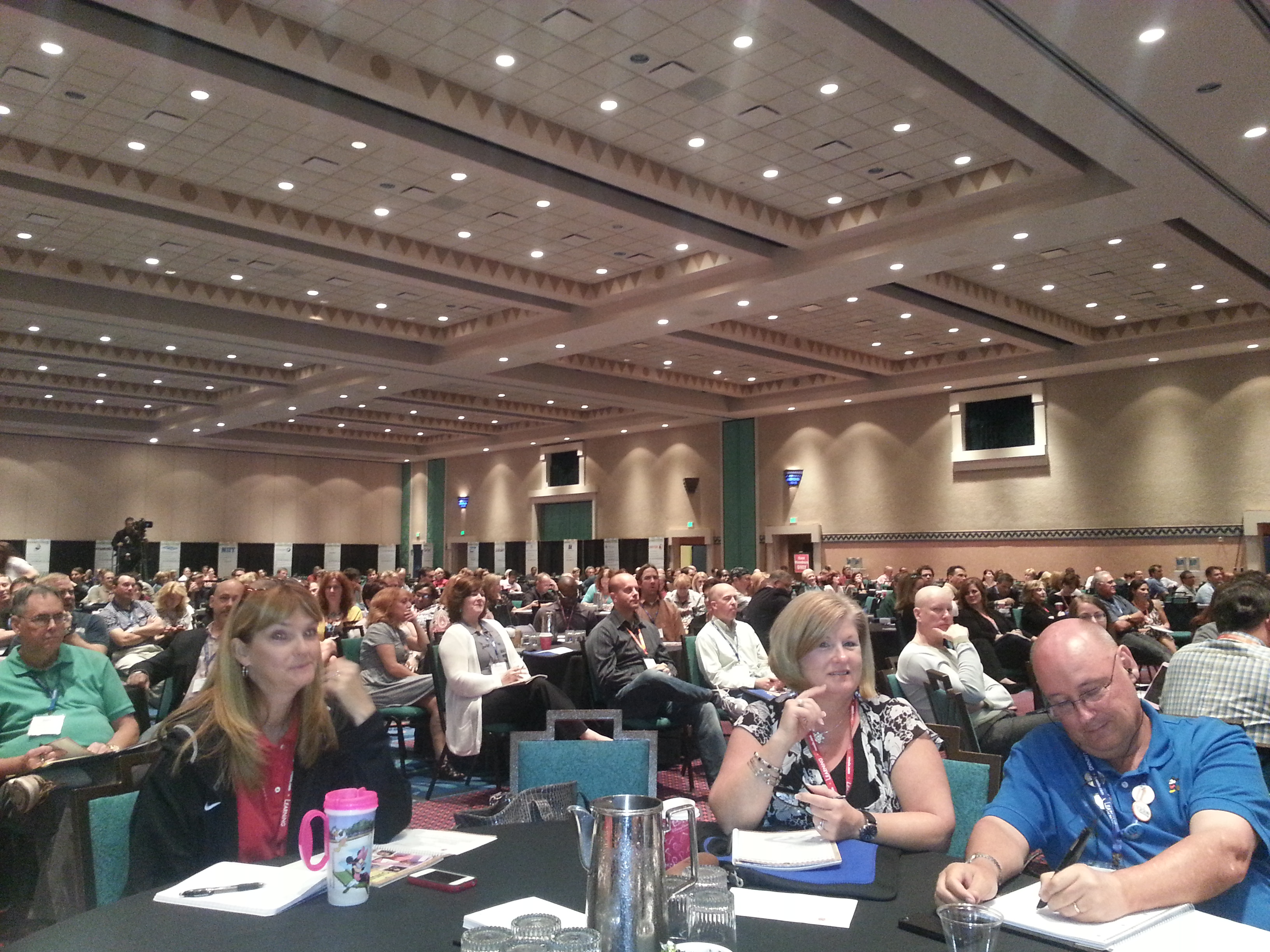Richard Culatta is with the US Department of Education at the Office of Educational Technology. He is an exceptional speaker and a “smart cookie”, I dig his self-deprecating style.
He kicked off by showing examples of what he calls “pencil sharpening” technology. Pencil sharpening is a metaphor for just making the same thing a little bit better without changing the paradigm. From the traditional blackboard to the digital whiteboard, from the traditional textbook to the e-book, from lectures to webinars. We should not be sharpening our pencils but instead let technology help us with the three challenges that prevent us from breaking with the one-size-fits-all methodology:
Challenge 1: We treat learners the same despite different needs and challenges. The least equitable thing we can do is treat everybody the same.
Challenge 2: We hold the schedule constant and allow the learning to vary.
Challenge 3: Student performance data comes too late to be useful.
The US government’s National Ed Tech Plan tries to address these challenges.
Culatta has made the following formula for personalized learning:
Adjusting the pace + Adjusting the learning approach + Leveraging student interests/experiences = Personalized learning
If you don’t have each of these three elements, then it isn’t personalized. This needs thinking on each of the following: learning, teaching and infrastructure.
Next he shared a set of examples. The one that stuck out for me is School of One, a concept school that creates personal curricula for its students using technology.

Taking a cue from this Richard suggests we should capture way more formative assessment data from our learners.
He finished by asking us all to download and read the Enhancing Teaching and Learning Through Educational Data Mining and Learning Analytics report. Allegedly a very readable introduction to the topic.




